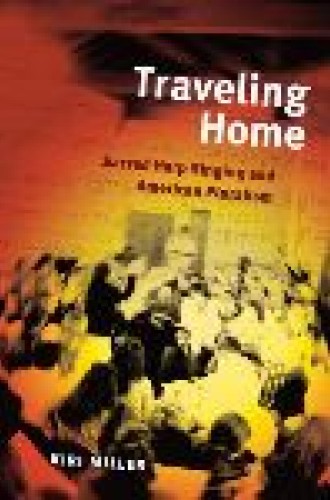Traveling Home: Sacred Harp Singing and American Pluralism
In 2005 our family made a pilgrimage from our home in Indiana to two all-day Sacred Harp singings in rural Alabama churches. Seventeen-year-old Ben Jacobs and his mom went along. Ben had sung occasionally with our local group but had not yet made the trek to the southern uplands where families have been singing from The Sacred Harp songbook for generations.
Ben took his turn to lead a song in the center of the hollow square created by the singers’ seating arrangement, and he found himself “surrounded by more than music, sound, and energy.” He reported that he “felt bombarded by an intense respect and love.” When he resumed his seat and the next song started, he remained silent, “too choked up to open the book.” Many of the people he sang with that day “were on a vastly different part of the political and religious spectrum. . . . But none of that seemed to matter. We were drawn together by the music with its heart-wrenching laments, jubilant praises, and energetic harmony—but even more, we were drawn together by the God we sang to.”
Traveling Home, part of University of Illinois Press’s Music in American Life series, examines Sacred Harp singing in cultural context. Author Kiri Miller teaches music at Brown University. Her perceptive analysis is informed by her training as an ethnomusicologist, more than a decade of singing with groups all over the country and a half dozen years of monitoring the lively conversation on the Sacred Harp Musical Heritage Association discussion lists at fasola.org. A keen observer and gifted writer, Miller marshals vivid stories from Sacred Harp devotees to illuminate various facets of the history and practice of Sacred Harp singing, including the one that so moved Ben.
Miller suggests that “rural Southern culture is often as inaccessible and unintelligible to new Sacred Harp singers as shape-note notation, partly because of entrenched stereotypes.” She describes learning to sing the notes as “a process of acculturation, and often one of growing mutual tolerance”—even (I would say) deep respect and affection. Sacred Harp conventions draw together urban and rural people, conservative Christians and people of no religious affiliation, young and old people, people with advanced degrees and people with little formal education. In a reversal that makes those who are often stereotyped and stigmatized the authoritative bearers of the tradition, northerners from diaspora Sacred Harp groups travel to the source to learn the conventions of this music and to soak up the old sound from those who are its custodians.
Traveling to singing events in the South is an essential initiation in the process by which longtime singers encourage and guide new singers and new groups. With that experience comes do-it-yourself empowerment. Although deeply rooted in a certain landscape, “the hollow square’s portability keeps this localism from being strictly insular or defensive: singers have the tools and materials to reassemble a similarly structured authentic locality anywhere.”
People who care about the church’s worship and music will want to read Miller’s descriptions of the interplay between individuals’ spirituality and the group’s worship. She describes strategies and circumstances in which people come to appropriate old Christian hymn texts that initially feel alien through “flexible interpretation” and the layering on of meaning through associations, relationships and events bound up with singing the hymns. And Miller describes the capacity of this music to express grief, to bind together people who feel marginalized and, “when speaking provides no relief,” to “render the unspeakable bearable.”
Miller explores paradoxes in the relationship between written tune book and oral performance, and she notes the role of modern media (recording devices, Internet-based communication) in transmitting this premodern music and sustaining the Sacred Harp diaspora. Although recordings provide a means by which others can preserve or even reenact the traditional singing, they cannot replace travel to the South. “Exposure to traditional singing,” Miller writes, is the necessary vehicle for creating relationships and establishing networks of obligation “that will engender authentic continuation of a living tradition.”
Traveling Home offers much more worth pondering—about the nature of leadership and authority in an egalitarian tradition, about what constitutes authentic practice, about what it means to belong and how outsiders come to claim the tradition, and about what marks an authentic convention and how its patterns and practices connect singers across time and space. Miller considers how conflict is contained and managed, and she considers how one might adjudicate the conflicting claims of restorationists who seek a return to the refined New England origins of the music and those who see as authoritative the rawer, 150-year-old southern tradition that has kept the music alive. Evocative, nuanced, never reductionistic, Miller’s explorations of this vibrant tradition of American hymnody merit attention in Sacred Harp circles and beyond.






